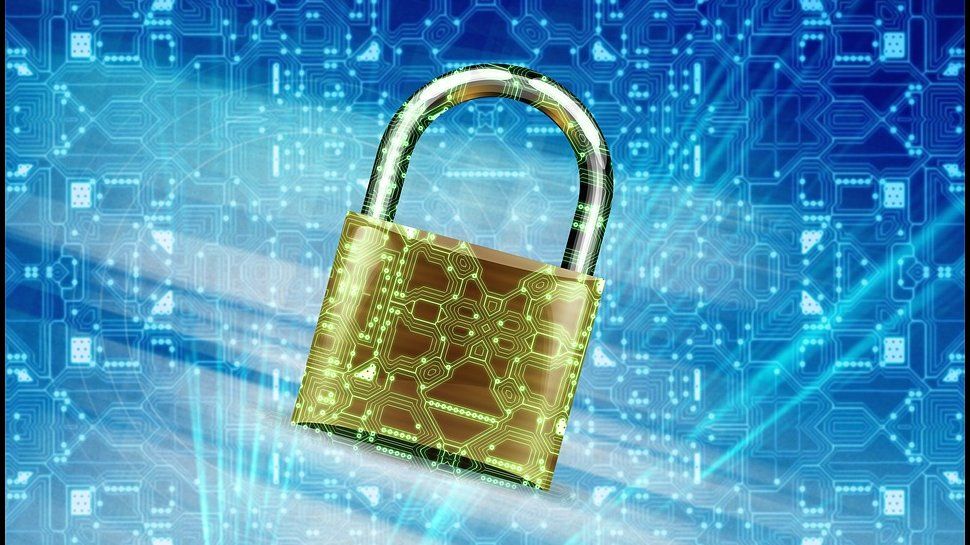Criminals stitching parts of people together sounds like something out of a horror movie. Unfortunately, it's happening every day with fragments of people's identities.
This practice is referred to as synthetic identity fraud, which occurs when someone obtains an individual's Social Security number and pairs it with information from other people's identities, such as a name, address or birthdate. This new identity allows them to borrow credit from lenders. If a criminal succeeds, the SSN owner may be left holding the bag.
While scary, this crime hinges on a cybercriminal using your Social Security number. Luckily, there are several ways you can prevent someone from using your SSN once they have it.
What is synthetic identity theft?
Synthetic identity theft is not a new phenomenon, but the term might be unfamiliar to most people.
Often referred to as Frankenstein fraud, synthetic identity theft is the practice of creating entirely new identities by piecing together various parts stolen from other identities. Some elements may be real and taken from more than one individual, while other parts may be fictitious. Yet these almost completely false identities are fooling the financial system at an alarming rate.
As many as 15 million consumers in the US are victims of synthetic identity fraud, and most are completely unaware of it, according to Frank McKenna, a fraud expert and chief fraud strategist at Point Productive.
That's because Frankenstein fraud often targets the most vulnerable victims -- children, the elderly and the homeless. These kinds of victims are the least likely to frequently check their credit reports.
Synthetic identity theft caused $20 billion in losses in 2020, according to the cyber fraud defense and software company FiVerity's 2021 identity fraud report.
How does synthetic identity theft work?
Synthetic identity fraud is an exercise in patience, at least on the criminal's part, especially if they're using the Social Security number of a child.
The identity is constructed by using a real Social Security number in combination with an unassociated name, address, date of birth, phone number or other piece of identifying information to create a new "whole" identity.
Criminals can purchase SSNs on the dark web, steal them from data breaches, or con them from people through things like phishing attacks and other scams.
Synthetic identity theft flourishes because of a simple flaw in the US financial and credit system. When the criminal uses the synthetic identity to apply to borrow from a lender, it's typically denied credit because there's no record of that identity in their system.
The thieves are expecting this since children and teens may have no credit or a thin history, and elderly individuals may have poor credit scores.
Once an identity applies for an account and is presented to a credit bureau, it's shared with other credit bureaus. That act is enough to allow credit bureaus to recognize the synthetic identity as a real person, even if there's little activity or evidence to support that it's a real person. Once the identity is established, the fraudsters can start borrowing credit from lenders.
How does synthetic identity fraud affect me?
Over the next few months, or even years, the thieves will focus on building credit and credibility around that fake identity by becoming an exemplary borrower -- paying off balances in full each month.
Finally, the fake identity has built up a high enough credit score that grants them access to greater lines of credit.
This is where identity thieves suddenly max out all credit cards and loans they can, abandon the false identity and disappear. The lender, and often the real owner of that Social Security number, is then left on the hook.
How to protect yourself from synthetic identity fraud
Synthetic identity fraud may sound scary, but there are steps you can take to mitigate how criminals can use your identifying data.
Freeze your credit reports
A credit freeze prevents creditors from accessing your credit reports, which means no one can open new lines of credit in your name. This includes you, unless your credit is unfrozen first with each of the major credit bureaus.
Since synthetic identity theft relies largely on stealing the Social Security numbers of kids and the elderly, one of the best ways to cut off that source is to freeze their credit too, though the process for freezing a child's credit is a bit more involved. Similarly, you can freeze your Social Security number to help prevent anyone from using it without your knowledge.
Check your credit reports regularly
If you don't freeze your credit reports, check them regularly for any suspicious activity. Be especially vigilant for the presence of any other names, addresses or employers connected to your credit file.
You can also sign up for a free credit monitoring like Capital One's CreditWise which will check the dark web for your personal identifiable information. You could also use an identity theft protection service to help automate checking your credit reports or to notify you if your data is leaked in a breach. You can also use AnnualCreditReport.com to get a free weekly credit report.
Watch out for phishing and social engineering attacks
If criminals can't get your Social Security number through a data breach or purchase it on the dark web, they can come directly to you and steal it through a phishing or social engineering attack. Criminals will try to trick you into revealing your Social Security number by pretending to be a bank, the IRS or the Social Security Administration.
While phishing tactics are growing more advanced because of AI, you can spot most of them if you remember to slow down and carefully read the email or text and scan it for typos or a sense of urgency that you must act quickly. If you receive an unprompted message from your bank, call the bank directly using a number on the bank's official website.
Protect any documents that include your Social Security number
While very few organizations will use your full SSN in communications, the full version will still be on things like tax returns.
So make sure you protect any printed copies, shred any copies you don't need, and delete any forms that might be attached to email communications with your CPA.
Check your Social Security statements
This can be done free through the Social Security Administration and will help you uncover if someone is using your Social Security number, or the number of one of your kids, to file for employment or benefits. You can request your Social Security statement here, and you can lock your number for added security.
The editorial content on this page is based solely on objective, independent assessments by our writers and is not influenced by advertising or partnerships. It has not been provided or commissioned by any third party. However, we may receive compensation when you click on links to products or services offered by our partners.









 English (US) ·
English (US) ·